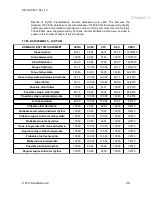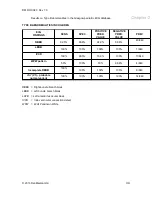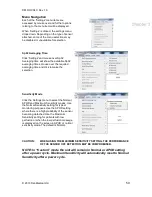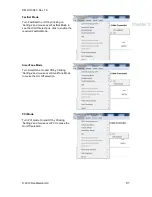
DM DOC 040 Rev 1.0
Spirometry general description
Spirometry (meaning the measuring of breath) is the most common of the pulmonary function
tests (PFTs), measuring lung function, specifically the amount (volume) and/or speed (flow) of air
that can be inhaled and exhaled.
Spirometry is an important tool used for generating pneumotachographs, which are helpful in
assessing conditions such as asthma, pulmonary fibrosis, cystic fibrosis, and COPD.
Spirometry is indicated for the following reasons:
to diagnose or manage asthma
to detect respiratory disease in patients presenting with symptoms of breathlessness, and
to distinguish respiratory from cardiac disease as the cause
to measure bronchial responsiveness in patients suspected of having asthma
to diagnose and differentiate between obstructive lung disease and restrictive lung
disease
to follow the natural history of disease in respiratory conditions
to assess of impairment from occupational asthma
to identify those at risk from pulmonary barotrauma while scuba diving
to conduct pre-operative risk assessment before anaesthesia or cardiothoracic surgery
to measure response to treatment of conditions which spirometry detects
Principle of operation
The spirometry test is performed using the D-MAS USB spirometer. D-MAS displays the following
graphs, called spirograms:
a volume-time curve, showing volume (liters) along the Y-axis and time (seconds) along
the X-axis
a flow-volume loop, which graphically depicts the rate of airflow on the Y-axis and the
total volume inspired or expired on the X-axis
Generally, the patient is asked to take the deepest breath they can, and then exhale into the
sensor as hard as possible, for as long as possible, preferably at least 6 seconds. It is sometimes
directly followed by a rapid inhalation (inspiration), in particular when assessing possible upper
airway obstruction.
Sometimes, the test will be preceded by a period of quiet breathing in and out from the sensor
(tidal volume), or the rapid breath in (forced inspiratory part) will come before the forced
exhalation.
During the test, soft nose clips may be used to prevent air escaping through the nose. Filter
mouthpieces may be used to prevent the spread of micro organisms.
The manoeuvre is highly dependent on patient cooperation and effort, and is normally repeated at
least three times to ensure reproducibility. Since results are dependent on patient cooperation,
FVC can only be underestimated, never overestimated.
Due to the patient cooperation required, spirometry can only be used on children old enough to
comprehend and follow the instructions given (6 years old or more), and only on patients who are
able to understand and follow instructions — thus, this test is not suitable for patients who are
unconscious, heavily sedated, or have limitations that would interfere with vigorous respiratory
efforts.
Another major limitation is the fact that many intermittent or mild asthmatics have normal
spirometry between acute exacerbation, limiting spirometry's usefulness as a diagnostic.
© 2013 DanMedical Ltd
38
















































